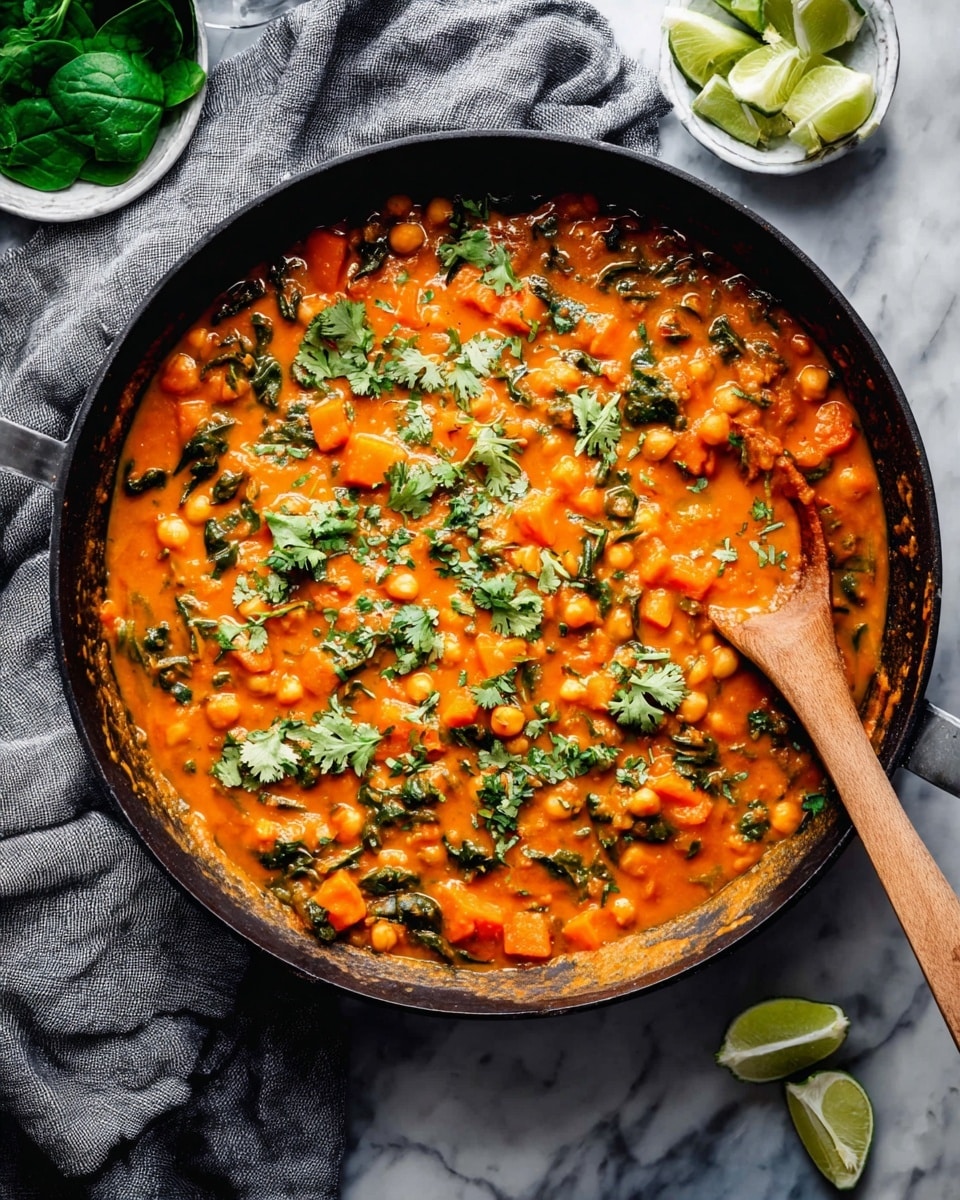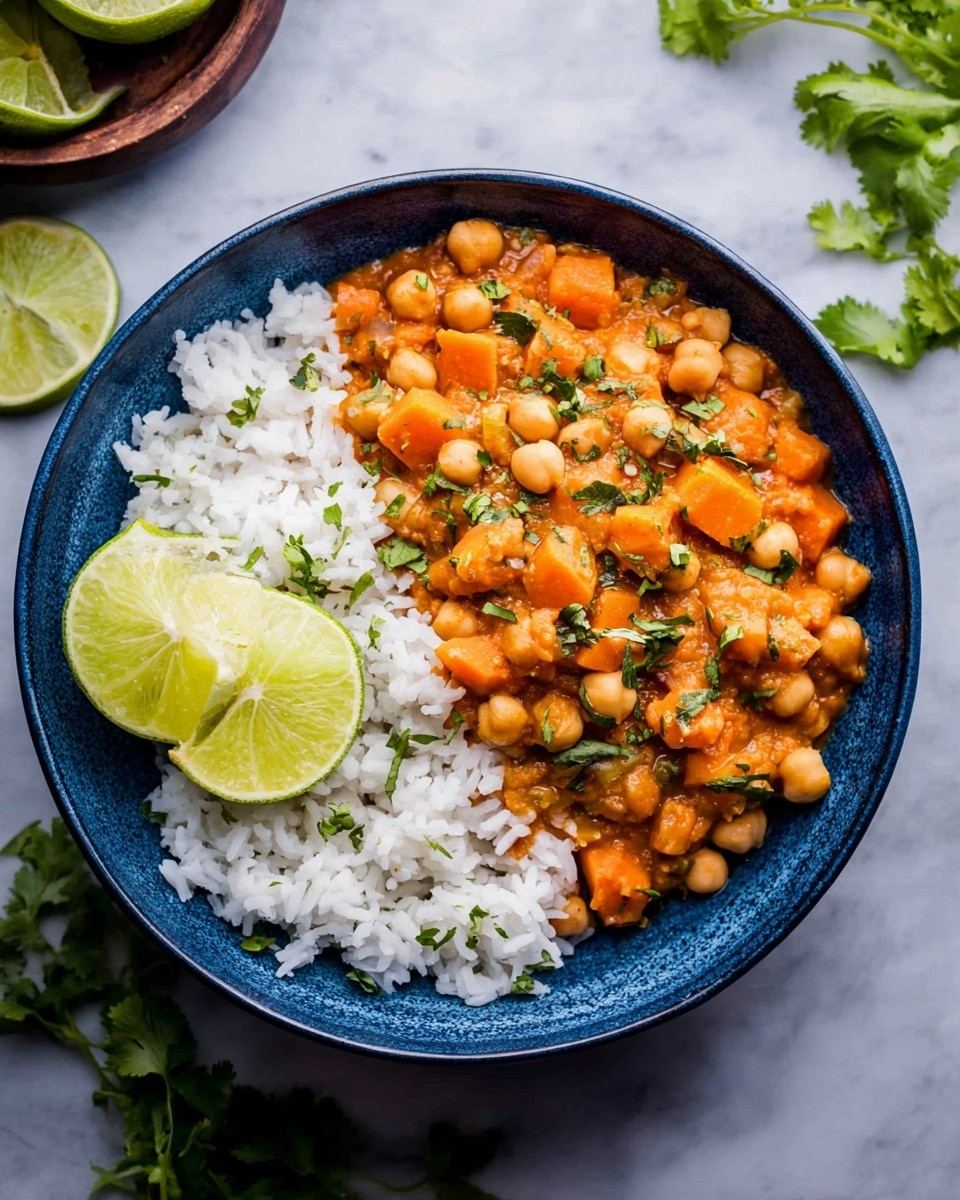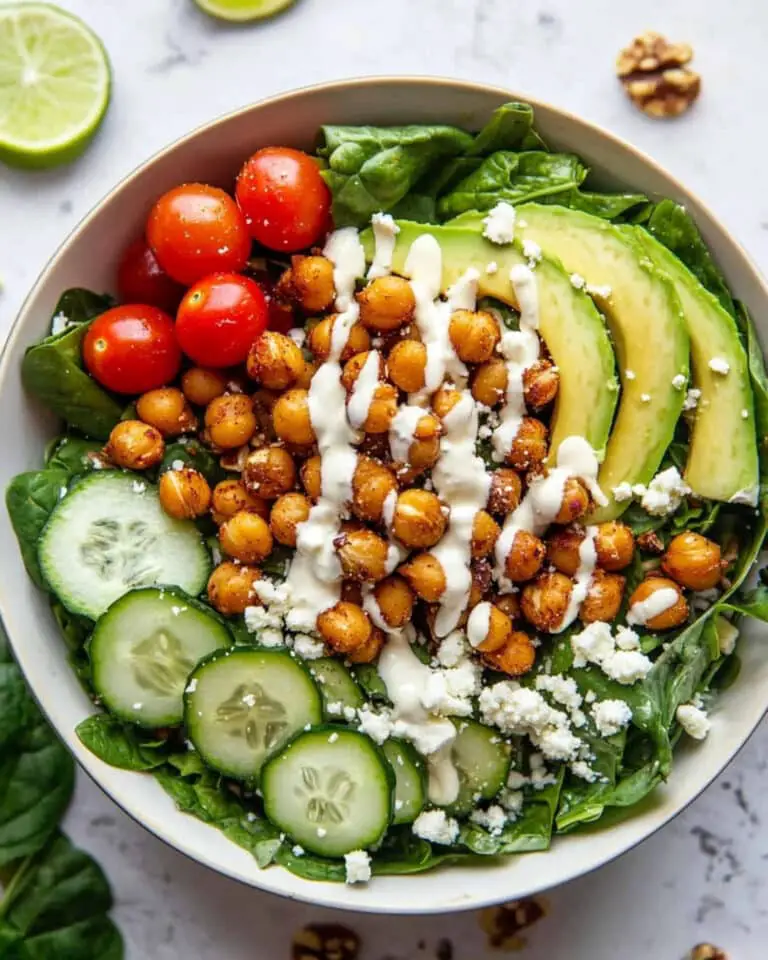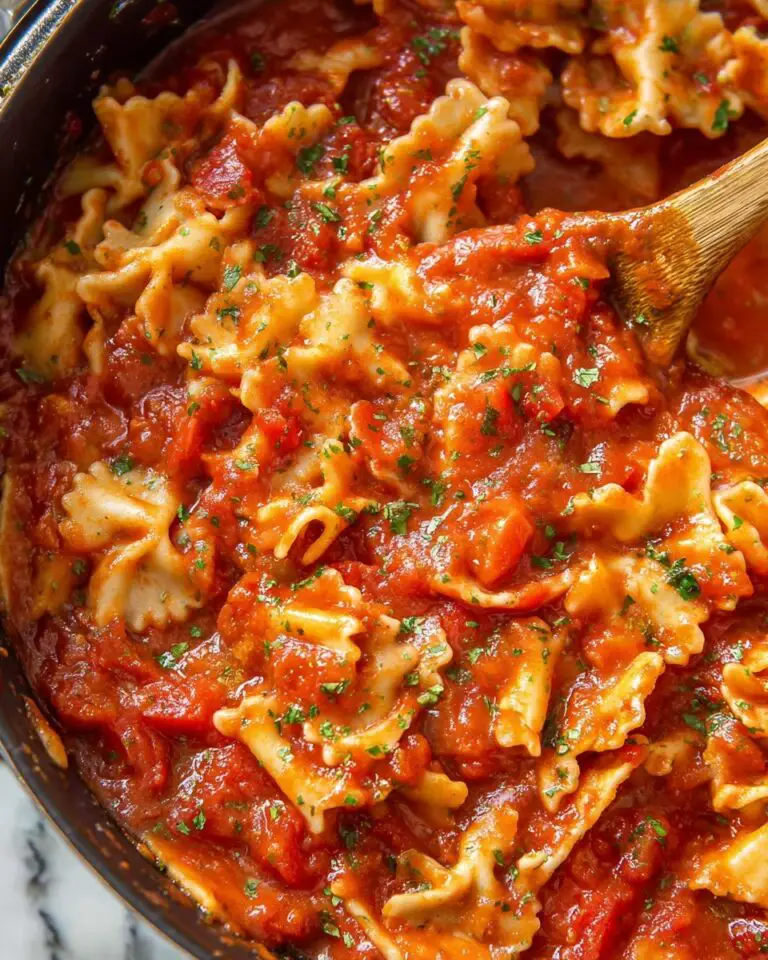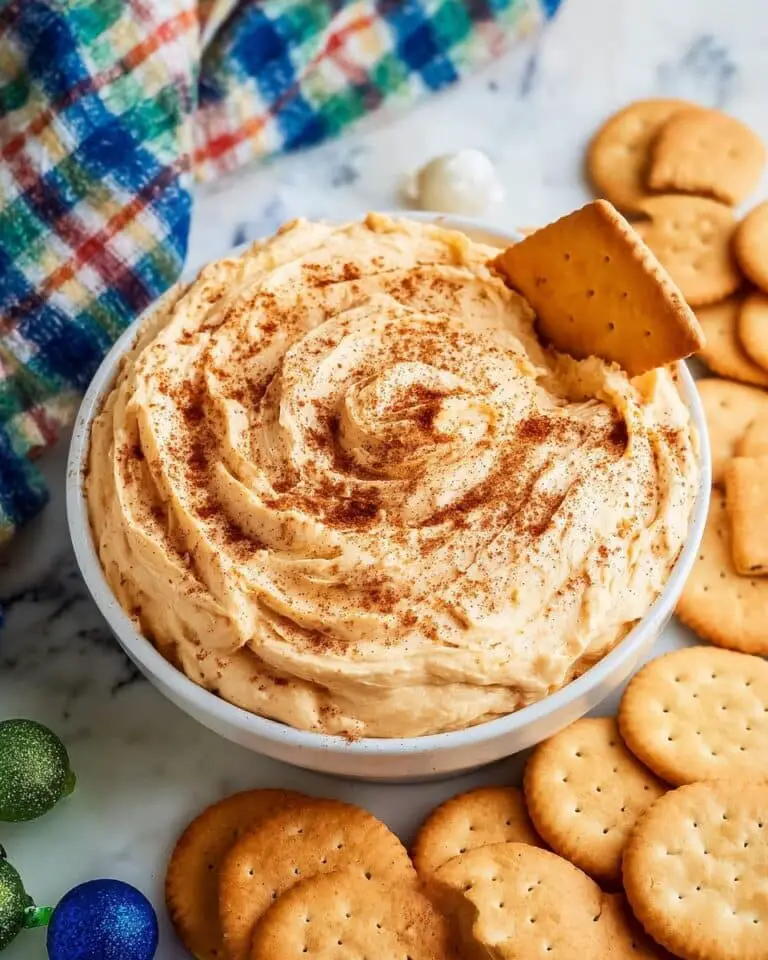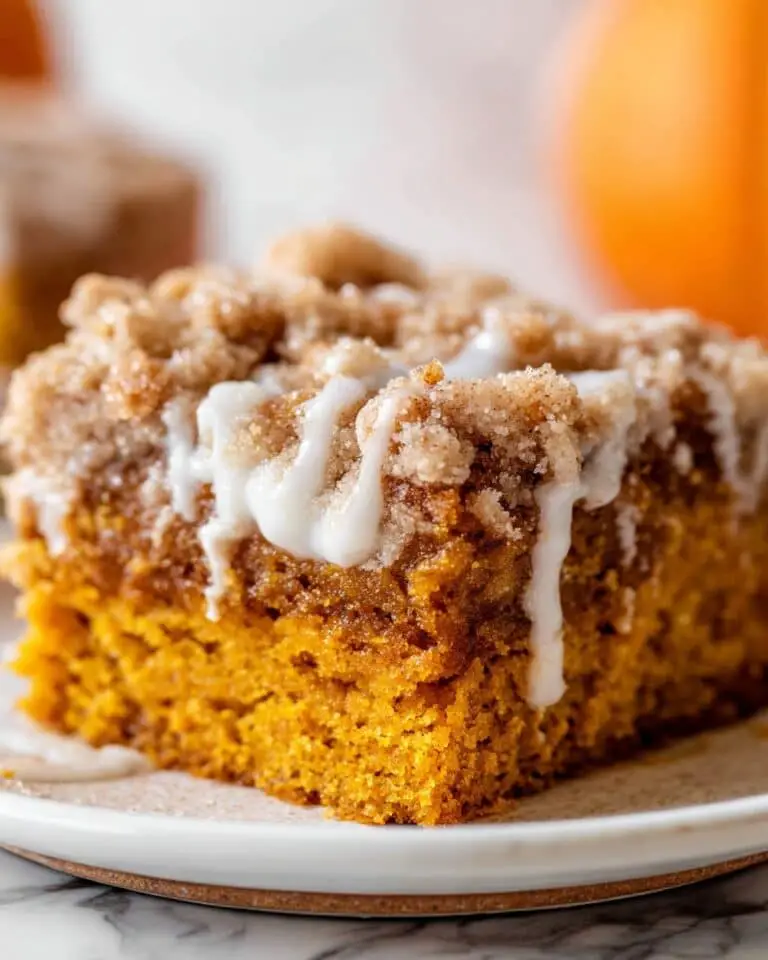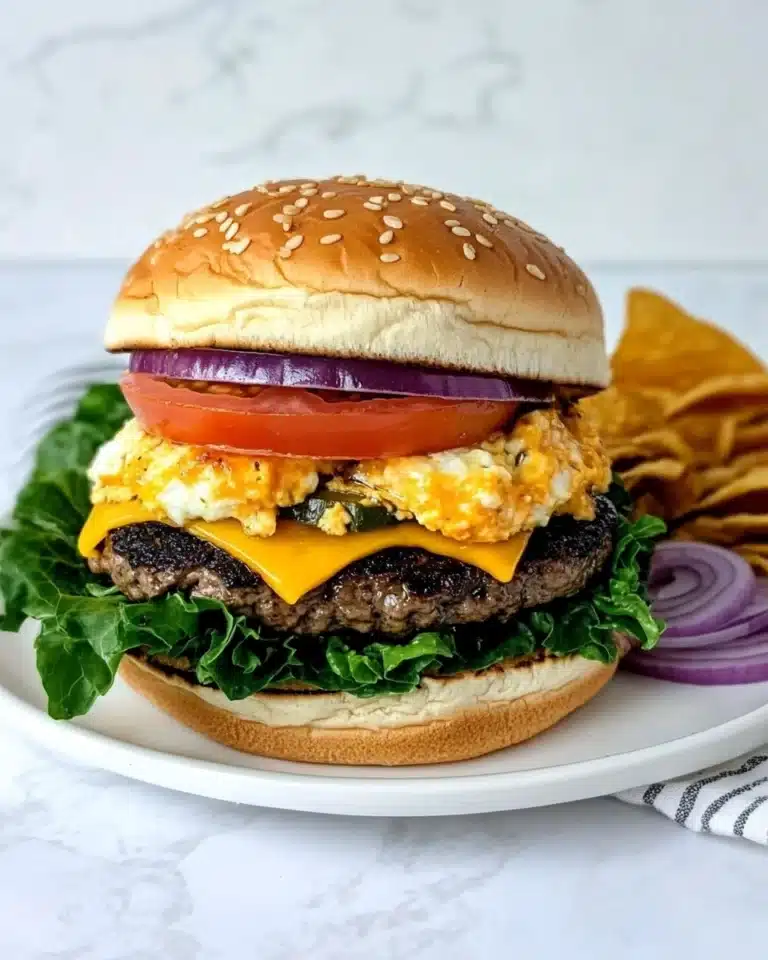If you’re craving a cozy, nutrient-packed meal that brings a burst of comforting flavors, this Butternut Squash Curry with Chickpeas Recipe is everything you need. It’s rich, creamy, and loaded with a satisfying mix of veggies and protein that’ll keep you warm and happy. Whether you’re new to curry-making or a seasoned home cook, you’ll find this recipe approachable and downright delicious. Stick with me—I’ll walk you through every step to make sure your curry turns out perfect!
Why You’ll Love This Recipe
- Comforting and Flavorful: The combination of red curry paste, coconut milk, and fresh herbs creates a rich, aromatic experience that feels like a warm hug.
- Perfect Weeknight Meal: It’s a one-pot wonder that’s both filling and fast enough to whip up after a busy day.
- Vegan and Nutrient-Dense: Chickpeas add protein and fiber, while butternut squash brings in vitamins and natural sweetness.
- Versatile and Easy to Customize: You can adjust the spice level or swap ingredients to make it your own.
Ingredients You’ll Need
The ingredients here combine freshness and pantry staples to build deep, layered flavors. I love how the sweetness of butternut squash balances perfectly with the tangy lime and spicy curry paste. Shopping tip: if you can find fresh lemongrass and Thai basil, definitely grab them—they totally elevate the dish.
- Coconut oil: Unrefined brings a lovely coconut aroma, but you can use refined or a neutral oil if you prefer less coconut flavor.
- Onion: Adds sweetness and body. Yellow or white onions work well.
- Carrots: Offer extra sweetness and texture.
- Kosher salt: For seasoning throughout the cooking process.
- Garlic: Minced fresh garlic gives that essential savory kick.
- Ginger: Freshly grated or finely minced is best for that warm, spicy brightness.
- Bird’s eye chili peppers: Optional but adds a beautiful heat when included—start with one if you’re unsure!
- Lemongrass: Minced fresh lemongrass adds citrusy depth—try to get it fresh; it’s worth the extra effort.
- Red curry paste: The star flavor booster—choose a brand you like, and adjust amount to spice preference.
- Coconut milk: Full-fat gives that velvety creaminess that makes the curry irresistible.
- Vegetable broth: Adds savory body; you can substitute with water if needed.
- Butternut squash: Peeled and cubed, this gives sweetness and heartiness.
- Soy sauce: Reduced-sodium keeps the salt in check while adding umami depth.
- Coconut sugar: Sweetens gently without overpowering—maple syrup is a nice alternative.
- Chickpeas: Protein-rich and filling; canned works perfectly.
- Baby spinach or kale: Adds fresh greens that wilt perfectly into the curry.
- Lime juice or rice vinegar: A splash of acid brightens the whole dish at the end.
- Fresh cilantro and Thai basil: Herbs that bring fresh, vibrant flavor; Thai basil adds a unique anise-like aroma.
- Rice (optional): White or brown to serve and soak up all that wonderful sauce.
Variations
I’m all about making recipes flexible for your kitchen and taste buds. This Butternut Squash Curry with Chickpeas Recipe is fantastic as-is, but I love trying out little swaps to keep it fresh and exciting. You should feel free to tweak the spice level, swap greens, or add extra veggies to suit your mood or pantry.
- Spice it up or down: When I first made this, I stuck to 1 bird’s eye chili and loved the mild heat; some days I go bold and add both for a real kick.
- Switch the greens: Baby kale works well, but spinach wilts so beautifully and adds a tender bite.
- Add other veggies: I’ve tossed in sweet potatoes or bell peppers in a pinch with great results.
- Protein swap: If you want to balance macros differently, try adding tofu cubes or even cooked chicken for a non-vegan option.
How to Make Butternut Squash Curry with Chickpeas Recipe
Step 1: Sauté Your Base Veggies to Sweet Perfection
Heat your Dutch oven or large saucepan over medium-high heat, then add the coconut oil. When it’s shimmering lightly, toss in the diced onion and carrots with a pinch of kosher salt. Here’s the magic: cook them for about 7-8 minutes until they get soft and develop a little golden edge. That browning step gives your curry its rich, slightly sweet backbone, so don’t rush it or skip it. Stir occasionally so nothing burns, but let them sit enough to brown.
Step 2: Build Flavor Layers with Garlic, Ginger, and Curry Paste
Add the minced garlic, grated ginger, sliced chili peppers if using, lemongrass, and red curry paste to the pot. Cook for about 2 minutes, stirring frequently. You want the spices and aromatics to bloom without drying out. If you notice it’s sticking or drying, add a splash or two of water to keep everything from burning. The smell at this point? Absolutely heavenly.
Step 3: Add Liquids, Butternut Squash & Simmer
Pour in a few spoonfuls of coconut milk and let it bubble for a minute while stirring, then add vegetable broth and scrape the pot’s bottom with your spatula to get any tasty stuck bits. Next, add the remaining coconut milk, cubed butternut squash, soy sauce, and coconut sugar. Stir that all together, bring to a boil, then reduce heat to maintain a gentle but steady simmer. Let it cook for about 20 minutes until the squash is tender—you want it soft enough to blend but not falling apart completely.
Step 4: Blend Half for Creamy Texture
Once the squash is perfectly tender, turn off the heat. Using an immersion blender, blend roughly half the curry right in the pot, leaving plenty of chunks to give it body and texture. If you don’t have an immersion blender, carefully transfer half the curry to a regular blender, then blend until smooth and stir it back in. This step makes the curry luxuriously creamy without losing that hearty feel.
Step 5: Finish With Chickpeas, Greens, and Fresh Herbs
Stir in the chickpeas and bring the curry back to a gentle simmer. Add your baby spinach or kale, stirring until it whips into a wilted, tender layer of green. Last, turn off the heat and brighten the curry with a squeeze of lime juice or a splash of rice vinegar. Toss in chopped cilantro and tear Thai basil leaves right before serving—they add such fresh, herbal brightness that lifts the whole dish.
Pro Tips for Making Butternut Squash Curry with Chickpeas Recipe
- Don’t Skip Browning the Veggies: That golden caramelization adds layers of flavor that make this curry stand out.
- Control Your Spice Level: Start with one bird’s eye chili and add more after tasting—it’s easier to add heat than to fix an overly spicy curry!
- Partial Blending for Texture: Blending half the curry gives a creamy body without losing that satisfying chunkiness.
- Fresh Herbs Last: Add cilantro and basil off the heat to preserve their bright flavors and aromas.
How to Serve Butternut Squash Curry with Chickpeas Recipe
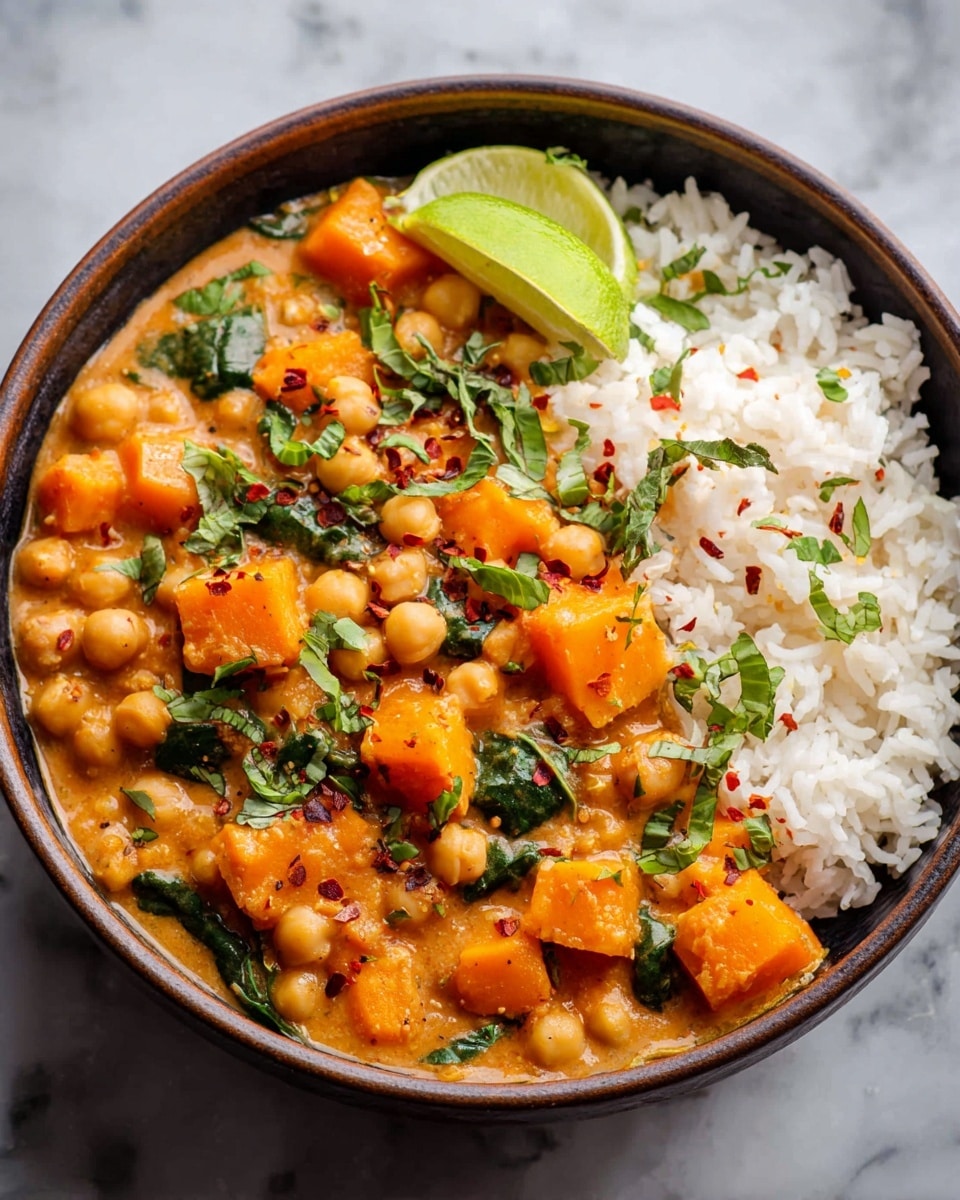
Garnishes
I always finish this curry with extra fresh cilantro and torn Thai basil leaves. The herbs add a fresh lift and beautiful aroma that contrast perfectly with the warm spices. Sometimes I sprinkle a few roasted peanuts or a drizzle of coconut cream on top for an indulgent touch. Lemon or lime wedges on the side are great for anyone who loves an extra tangy pop.
Side Dishes
White jasmine rice or brown rice is my go-to pairing, helping soak up the rich curry sauce. For a lighter option, cauliflower rice works beautifully. You could also serve this alongside warm naan or crusty bread to scoop every bit.
Creative Ways to Present
For special dinners, I like serving the curry in individual bowls, topping each with a sprig of Thai basil and a lime wedge on the rim. Another fun idea: serve it over coconut rice and garnish with toasted coconut flakes for a tropical twist that impresses guests.
Make Ahead and Storage
Storing Leftovers
I store leftover curry in airtight containers in the fridge for up to 4 days. The flavors really deepen overnight, so it’s perfect for meal prep lunches or quick dinners.
Freezing
This curry freezes wonderfully! I portion it into freezer-safe containers and freeze for up to 3 months. When you’re ready, thaw overnight in the fridge and reheat gently on the stove or in the microwave.
Reheating
To reheat leftovers, I prefer warming it slowly on the stove over medium-low heat to keep the texture creamy and prevent the coconut milk from separating. Stir often and add a splash of water or broth if the curry thickens too much.
FAQs
-
Can I make this Butternut Squash Curry with Chickpeas Recipe gluten-free?
Absolutely! Just be sure to use gluten-free soy sauce or tamari instead of regular soy sauce, and confirm your curry paste is gluten-free (most are, but it’s always good to check). The rest of the ingredients are naturally gluten-free.
-
How spicy is this curry?
The spice level depends on how many bird’s eye chilies you add and the amount of curry paste used. I recommend starting with one chili for a mild heat, then adjust in future batches. Red curry paste usually has moderate heat, but brands vary, so taste as you go.
-
Can I use other squash instead of butternut?
Yes! Kabocha or pumpkin can work well too, though the texture and sweetness might vary slightly. Just cut to similar-sized pieces for even cooking.
-
Is it okay to skip the lemongrass?
You can, but I highly recommend not skipping it if you can find it. Lemongrass adds a subtle citrus aroma that really brightens the curry. If unavailable, a little fresh lime zest can help mimic some of the flavor.
Final Thoughts
This Butternut Squash Curry with Chickpeas Recipe holds a special place in my weeknight rotation because it’s hearty yet healthy, packed with flavor but simple to pull together. Every time I make it, my family goes crazy over the creamy texture balanced by fresh herbs and bright lime. I can’t recommend it enough if you want something comforting, plant-based, and totally satisfying. Give it a try—you might just find your new favorite curry!
Print
Butternut Squash Curry with Chickpeas Recipe
- Prep Time: 15 minutes
- Cook Time: 35 minutes
- Total Time: 50 minutes
- Yield: 6 servings (6 servings with rice)
- Category: Main Course
- Method: Stovetop
- Cuisine: Thai
- Diet: Vegan
Description
This Butternut Squash Curry with Chickpeas is a flavorful and aromatic Thai-inspired vegan dish that combines tender butternut squash, protein-rich chickpeas, and vibrant spices in a creamy coconut milk base. Perfect as a wholesome, comforting one-pot meal, it’s also freezer-friendly and ideal for weeknight dinners or meal prep. The curry is rich in nutrients, balanced in flavors, and easy to customize with your choice of spice level and fresh herbs.
Ingredients
Main Ingredients
- 1 1/2 tablespoons unrefined coconut oil (or refined for neutral taste, or a neutral oil of choice)
- 1 large onion, diced
- 2 medium carrots, diced
- Kosher salt, to taste
- 4 cloves garlic, minced
- 2-inch piece ginger, grated or finely minced
- 1-3 bird’s eye chili peppers, thinly sliced (optional; only use for spicy!)
- 2 stalks fresh lemongrass, minced or grated (optional but recommended)
- 5 tablespoons red curry paste
- 1 (13.5-ounce) (400 mL) can full-fat coconut milk
- 1 cup (240 mL) low-sodium vegetable broth (or water)
- 5 cups (700-730g) peeled and cubed butternut squash (~2.5 pound butternut squash)
- 2 1/2 tablespoons reduced-sodium soy sauce (or 1 tablespoon Thai Light Soy Sauce)
- 1 1/2 tablespoons coconut sugar (or pure maple syrup)
- 2 15-ounce (425g) cans chickpeas, rinsed and drained
- 4 cups (60g) baby spinach or baby kale (about 4 large handfuls)
- 1 tablespoon lime juice or rice vinegar
- 1 large handful fresh cilantro, roughly chopped
- 1 handful Thai basil leaves
- White rice or brown rice (for serving, optional)
Instructions
- Sauté Vegetables: Heat a Dutch oven or large saucepan over medium-high heat. Add the coconut oil and once shimmering, add diced onions and carrots with a pinch of kosher salt. Cook for 7-8 minutes until vegetables are tender and lightly browned.
- Add Aromatics and Curry Paste: Stir in minced garlic, grated ginger, sliced chili peppers (if using), minced lemongrass (if using), and red curry paste. Cook while stirring frequently for 2 minutes to coat the vegetables and prevent burning. Add a tablespoon or two of water if the mixture begins to stick.
- Incorporate Coconut Milk and Broth: Pour in a few spoons of coconut milk and let it bubble for a minute while stirring well. Add the vegetable broth, scraping the bottom of the pot to release any browned bits. Then add the remaining coconut milk, cubed butternut squash, soy sauce, and coconut sugar, stirring to combine.
- Simmer Curry: Bring the mixture to a boil, then reduce heat to low or medium-low to maintain a rapid simmer. Cook uncovered for 20 minutes, or until the squash is tender and cooked through.
- Partially Blend the Curry: Turn off the heat and use an immersion blender to puree roughly half of the curry, leaving some squash chunks for texture. Alternatively, transfer half of the curry to a blender, puree until mostly smooth, then return it to the pot and stir to combine.
- Add Chickpeas and Greens: Stir in the drained chickpeas and bring the curry back to a gentle simmer. Once simmering, add the baby spinach or kale and stir until the greens are wilted.
- Finish with Lime and Herbs: Turn off the heat. Stir in lime juice or rice vinegar, then season with salt as needed. Tear the Thai basil leaves to release their oils and add them along with chopped cilantro to the curry.
- Serve: Serve the curry over white or brown rice. Garnish with additional cilantro or Thai basil as desired.
Notes
- This curry offers a delicious Thai-inspired vegan option that is aromatic, nutritious, and perfect as a one-pot meal.
- Adjust the number of bird’s eye chili peppers to control spiciness.
- Use refined coconut oil or a neutral oil for a less coconutty flavor if preferred.
- Red curry paste brands vary in heat; adjust quantity to taste.
- This dish is freezer-friendly and meal prep-approved.
Nutrition
- Serving Size: 1 serving
- Calories: 400 kcal
- Sugar: 8 g
- Sodium: 880 mg
- Fat: 21 g
- Saturated Fat: 16 g
- Unsaturated Fat: 4 g
- Trans Fat: 0 g
- Carbohydrates: 48 g
- Fiber: 11 g
- Protein: 12 g
- Cholesterol: 0 mg

